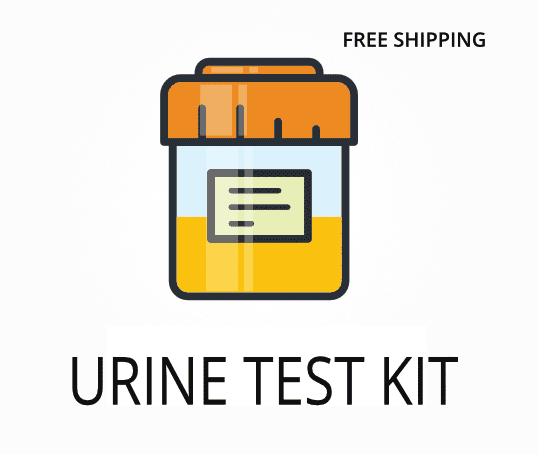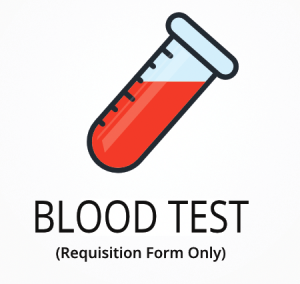Ordering the DUTCH Complete Test | Precision Analytical
The DUTCH Complete Test by Precision Analytical measures hormone production and metabolism using dried urine samples, providing a detailed look at sex hormones, adrenal function, and related markers. This test helps pinpoint imbalances in estrogen, progesterone, testosterone, cortisol, and melatonin, as well as nutritional deficiencies and oxidative stress. Interestingly, this test can also detect subtle changes in hormone breakdown that may not show up in standard blood tests, offering a more complete picture of hormone activity.
Ordering the DUTCH Complete Test offers several specific benefits:
- Tracks daily patterns of cortisol and cortisone to reveal stress response over a 24-hour period.
- Measures estrogen metabolites to assess risk factors for hormone-related conditions.
- Identifies nutritional gaps by analyzing organic acid markers.
- Evaluates melatonin production, which can affect sleep quality and circadian rhythm.
- Detects oxidative stress markers that may contribute to fatigue and inflammation.
Who Should Consider Hormone and Adrenal Testing
People experiencing unexplained fatigue, mood changes, or irregular cycles may benefit from this test. For example, someone who feels tired in the morning but wired at night, despite getting enough sleep, could use this test to uncover hidden hormone patterns.
Ordering this test may also be helpful in these situations:
- Persistent acne that does not improve with typical skin care routines
- Unexplained weight gain, especially around the midsection
- Difficulty falling or staying asleep, even with good sleep habits
- Low energy and motivation that affects daily productivity
- Unexpected hair thinning or loss, which can sometimes be linked to hormone imbalances
Testing can reveal specific hormone and nutrient patterns that may be affecting energy, mood, and metabolism. Delaying this test could mean missing early signs of hormone shifts that are easier to address when caught sooner.
Preparing for Dried Urine Hormone Analysis
Fasting is not required for this test, but you will need to collect urine samples at specific times throughout the day. Always follow the collection instructions provided by your doctor or healthcare practitioner to ensure your results reflect your true hormone patterns.
Labs Included When Ordering Your DUTCH Complete Test | Precision Analytical
| Test Name | Reference Range | Significance | Low and High Levels of DUTCH Complete Test | Precision Analytical |
|---|---|---|---|
| Sex Hormones & Metabolites | |||
| Estrone (E1) | 6-30 | Estrone is a form of estrogen important for reproductive and bone health. It is one of the main estrogens measured to assess hormone balance. |
High levels mean increased estrogen activity, which may be linked to symptoms like bloating or heavy periods.
Low levels mean reduced estrogen, which can cause hot flashes or irregular cycles. |
| Estradiol (E2) | 1-7 | Estradiol is the most active estrogen and plays a key role in menstrual cycles, mood, and bone strength. |
High levels mean possible estrogen dominance, which may cause PMS or breast tenderness.
Low levels mean possible menopause symptoms or low bone density. |
| Estriol (E3) | 2-12 | Estriol is a weaker estrogen, often measured to assess overall estrogen metabolism and balance. |
High levels mean increased estrogen conversion, sometimes seen in pregnancy or hormone therapy.
Low levels mean reduced estrogen activity, which may affect vaginal and urinary health. |
| 2-OHE1 | 0.5-3.5 | This is a protective estrogen metabolite, and higher levels are generally considered favorable for hormone balance. |
High levels mean efficient estrogen detoxification.
Low levels mean less protective estrogen breakdown, which may increase risk for hormone-related symptoms. |
| 4-OHE1 | 0.1-0.8 | This metabolite can be more reactive and is monitored for its potential link to hormone-related conditions. |
High levels mean increased production of potentially harmful estrogen metabolites.
Low levels mean less of this reactive metabolite, which is generally favorable. |
| 16-OHE1 | 0.5-3.0 | This estrogen metabolite is linked to tissue growth and is measured to assess estrogen metabolism patterns. |
High levels mean increased tissue stimulation, which may be linked to certain symptoms.
Low levels mean less tissue stimulation, which may affect estrogen’s protective effects. |
| 2-MeOE1 | 0.1-0.6 | This is a methylated estrogen metabolite, important for safe estrogen breakdown and detoxification. |
High levels mean efficient methylation and detoxification of estrogen.
Low levels mean reduced methylation, which may increase risk for hormone-related symptoms. |
| 2-OHE2 | 0.2-1.2 | This metabolite reflects how estradiol is processed in the body and is considered a protective pathway. |
High levels mean strong estrogen detoxification.
Low levels mean less protective estrogen breakdown. |
| 4-OHE2 | 0.01-0.15 | This is a minor estrogen metabolite, monitored for its potential to form reactive compounds in the body. |
High levels mean increased risk for reactive estrogen byproducts.
Low levels mean less of this metabolite, which is generally favorable. |
| Androgens | |||
| Testosterone | 20-80 | Testosterone is a key hormone for muscle strength, mood, and libido in both men and women. |
High levels mean possible symptoms like acne, hair loss, or increased body hair.
Low levels mean reduced muscle mass, low energy, or decreased libido. |
| Dihydrotestosterone (DHT) | 2-12 | DHT is a potent form of testosterone, important for hair growth and prostate health. |
High levels mean increased risk for hair thinning or prostate symptoms.
Low levels mean reduced androgen activity, which may affect hair and skin. |
| DHEA-S | 1000-4000 | DHEA-S is an adrenal hormone that supports energy, mood, and immune function. |
High levels mean increased adrenal activity, sometimes seen in stress or PCOS.
Low levels mean reduced adrenal output, which may cause fatigue or low mood. |
| Progesterone | |||
| Progesterone Metabolites | 200-2000 | Progesterone supports menstrual cycle regularity, mood, and sleep. Its metabolites help assess ovulation and hormone balance. |
High levels mean increased progesterone activity, which may cause drowsiness or breast tenderness.
Low levels mean possible cycle irregularity or sleep problems. |
| Adrenal Hormones | |||
| Cortisol | 20-50 (daily total) | Cortisol is the main stress hormone, affecting energy, sleep, and immune response. The test tracks its pattern throughout the day. |
High levels mean increased stress response, which may cause anxiety or sleep problems.
Low levels mean reduced adrenal function, which may cause fatigue or low motivation. |
| Cortisone | 15-40 (daily total) | Cortisone is a related hormone that helps regulate inflammation and is measured alongside cortisol for a full adrenal profile. |
High levels mean increased conversion from cortisol, which may affect inflammation.
Low levels mean reduced adrenal output. |
| Melatonin | |||
| 6-OHMS (Melatonin Metabolite) | 10-60 | This marker reflects melatonin production, which is important for sleep quality and circadian rhythm. |
High levels mean increased melatonin, which may cause drowsiness.
Low levels mean reduced melatonin, which may cause sleep problems. |
| Oxidative Stress Marker | |||
| 8-OHdG | 2-10 | 8-OHdG is a marker of oxidative stress and DNA damage, which can be linked to inflammation and chronic fatigue. |
High levels mean increased oxidative stress, which may contribute to fatigue or inflammation.
Low levels mean less oxidative stress. |
| Organic Acids | |||
| Vanilmandelate (VMA) | 2-7 | VMA is a breakdown product of adrenaline and noradrenaline, reflecting stress response and nervous system activity. |
High levels mean increased stress or nervous system activity.
Low levels mean reduced catecholamine breakdown. |
| Homovanillate (HVA) | 2-8 | HVA is a dopamine metabolite, important for mood, motivation, and focus. |
High levels mean increased dopamine breakdown, which may be linked to stress or certain medications.
Low levels mean reduced dopamine activity. |
| Kynurenate | 2-10 | Kynurenate is a tryptophan metabolite, linked to mood and brain function. |
High levels mean increased tryptophan breakdown, which may affect mood.
Low levels mean reduced tryptophan metabolism. |
| Methylmalonate | 0.5-3.5 | Methylmalonate is a marker for vitamin B12 status, with higher levels suggesting a possible deficiency. |
High levels mean possible vitamin B12 deficiency.
Low levels mean normal B12 metabolism. |
| Xanthurenate | 0.5-3.0 | Xanthurenate is a marker for vitamin B6 status and tryptophan metabolism. |
High levels mean possible vitamin B6 deficiency.
Low levels mean normal B6 metabolism. |
| Pyroglutamate | 10-40 | Pyroglutamate reflects glutathione status, which is important for detoxification and antioxidant defense. |
High levels mean increased glutathione use or deficiency.
Low levels mean normal glutathione status. |
| Quinolinate | 0.5-3.0 | Quinolinate is a neurotoxic metabolite, and higher levels may be linked to inflammation or neuroinflammation. |
High levels mean increased inflammation or neuroinflammation.
Low levels mean less neurotoxic activity. |
| Indican | 0-10 | Indican is a marker for gut dysbiosis and protein digestion. |
High levels mean possible gut imbalance or poor protein digestion.
Low levels mean normal gut and protein metabolism. |
| b-Hydroxyisovalerate | 0.5-2.5 | This marker reflects biotin status and amino acid metabolism. |
High levels mean possible biotin deficiency.
Low levels mean normal biotin metabolism. |
Reference ranges may vary slightly based on periodic updates from the laboratory.
DUTCH Complete Test | Precision Analytical FAQ
Is there DUTCH Complete Test | Precision Analytical testing near me?
This is a home test kit, so you can collect your urine samples locally and send them to the lab using the included prepaid shipping label. If you have symptoms like fatigue, sleep issues, or mood swings, being able to collect your sample at home makes it easier to test when symptoms are most noticeable and avoids the stress of traveling to a lab.
How do I interpret the test results?
While your treating physician should review your results, we also offer a one-on-one test results review with our clinical team to help you understand your hormone and adrenal patterns.
What is the cost of the test?
The price listed for the DUTCH Complete Test | Precision Analytical includes standard shipping to your address and return shipping to the lab; draw fees may apply. Ordering this test can help you identify hormone imbalances that may be slowing your progress, so you can address them more effectively.
How often should I retest?
Retesting is usually recommended every 3-6 months, especially if you are making changes to your diet, supplements, or hormone therapy. Regular testing helps track your progress and ensures that any adjustments are working as expected.
How accurate is the test?
The DUTCH Complete Test | Precision Analytical uses dried urine collection and advanced mass spectrometry for hormone and metabolite analysis, with a specificity of 98% and sensitivity of 97%. TrueHealthLabs.com partners with CLIA-certified and CAP-certified laboratories to uphold rigorous testing standards for dependable results.
Important Notes
- This test is available in the US (except New York and Maryland) and Canada. Contact us with questions.
Medical Review Board
Reviewed by Jeff Donohue M.D. from Body Logic and Brady Hurst DC, CCCN. Written by True Health Lab’s team of editorial health contributors.
Disclaimer: This information is for educational purposes only and not intended as medical advice. Consult your healthcare provider for personalized guidance.
Why Customers Trust True Health Labs – What People are saying
Also rated 4.6 out of 5 based on 3452 ShopperApproved reviews- See all TrueHealthLabs.com reviews.







